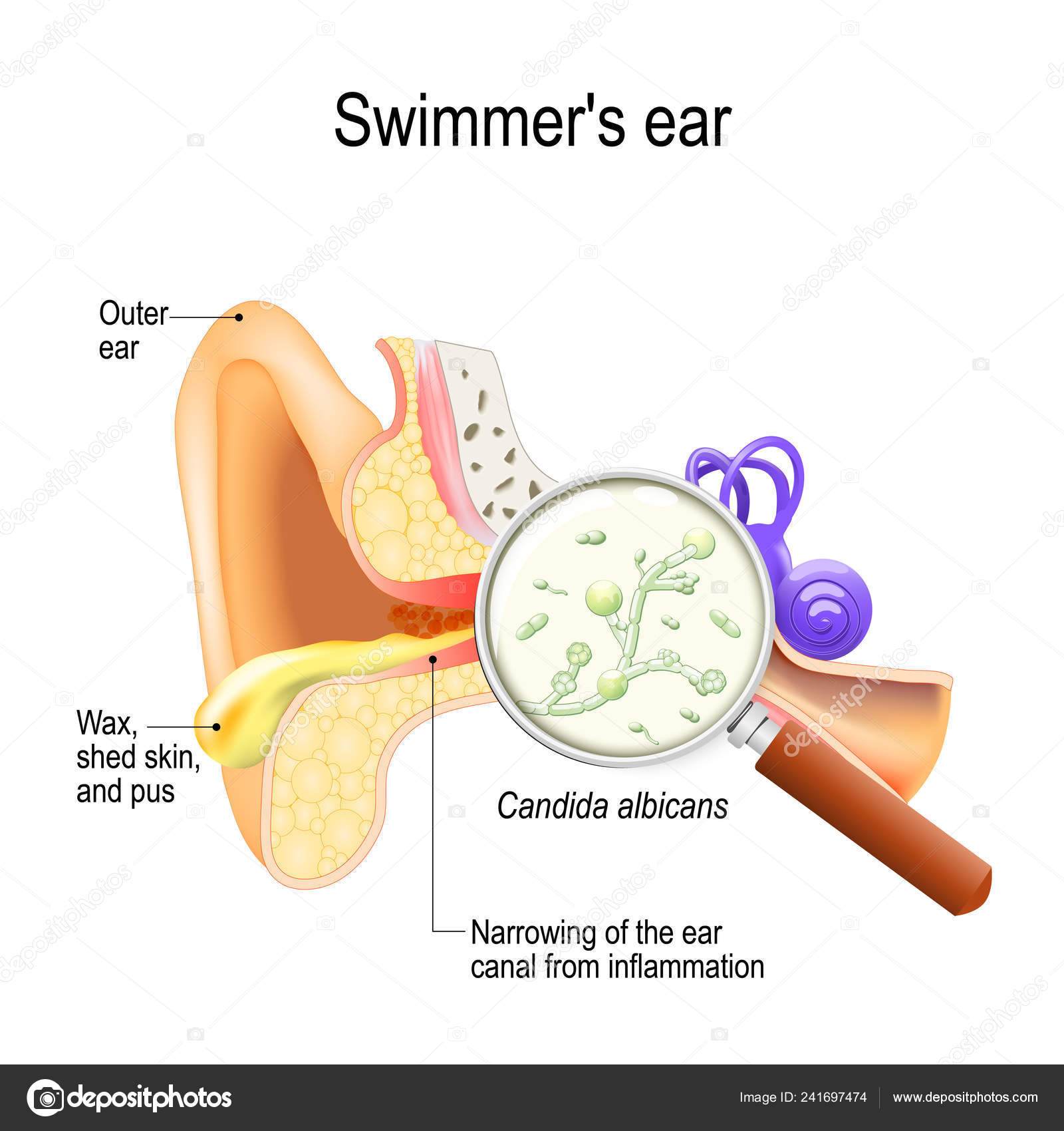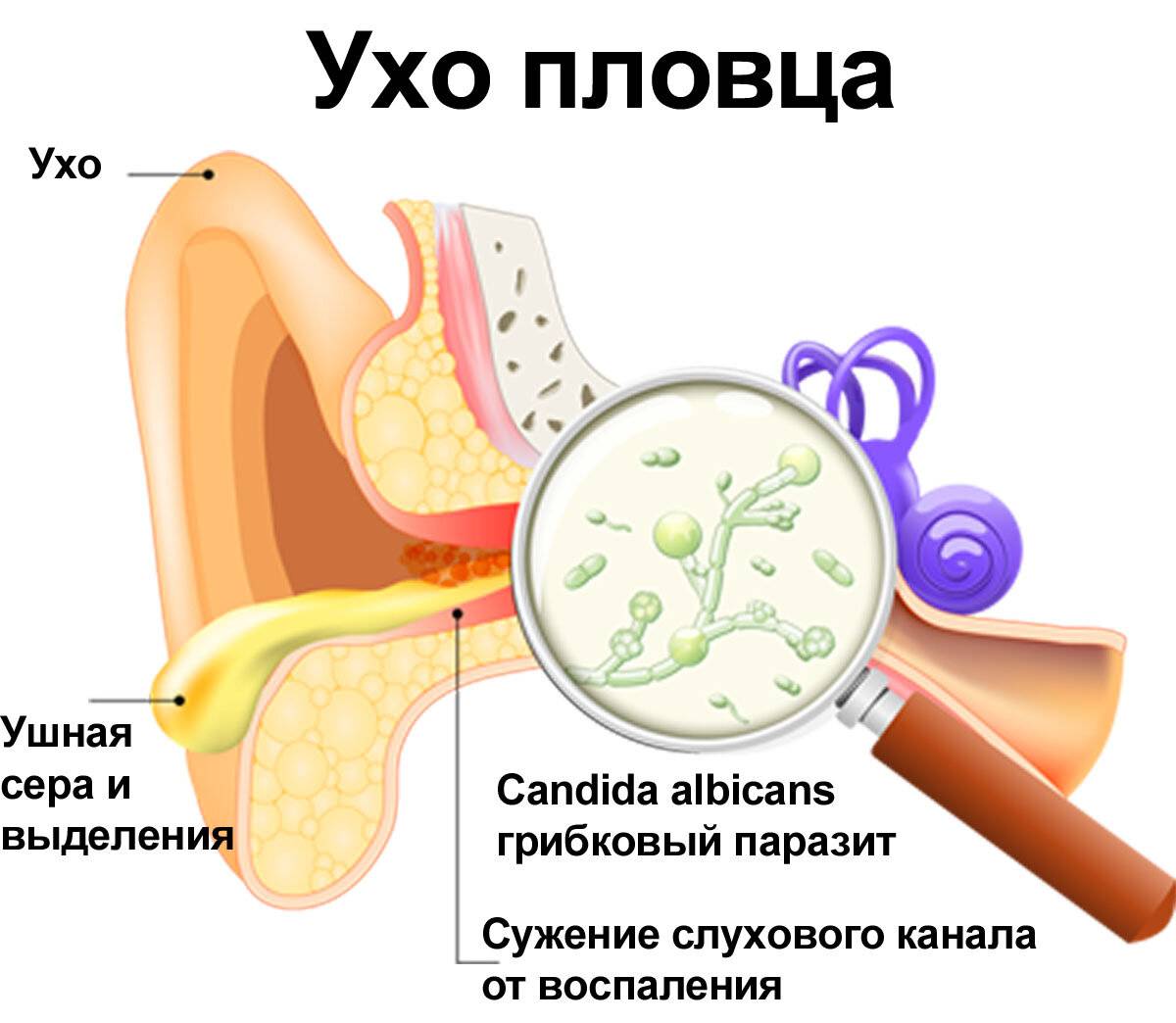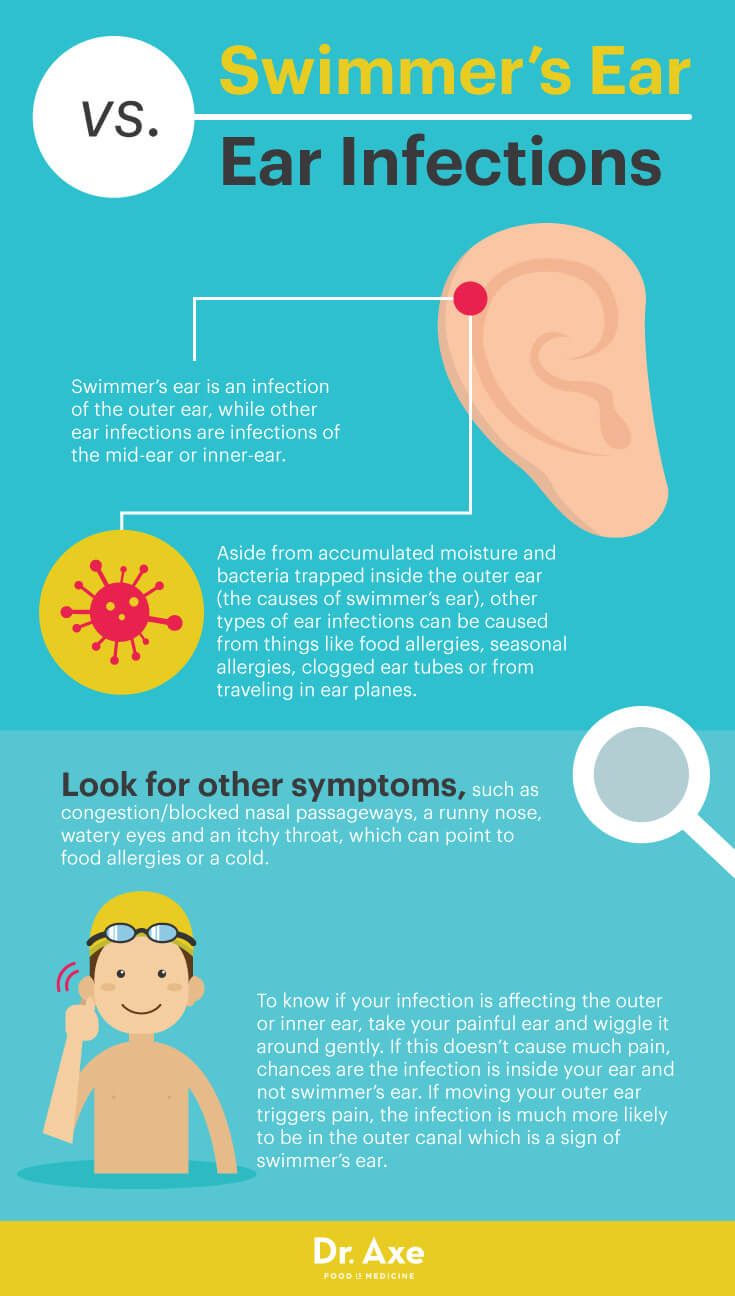Ear pain from swimming. Swimmer’s Ear: Symptoms, Causes, and Effective Treatment Options
What are the symptoms of swimmer’s ear? What causes swimmer’s ear? What are the effective treatment options for swimmer’s ear? Get the answers to these questions and more in this comprehensive article.
Understanding Swimmer’s Ear
Swimmer’s ear, also known as otitis externa, is an infection or inflammation of the canal between the eardrum and the outer ear. This condition can be triggered by exposure to water, mechanical damage, or chemical irritation, and can be caused by fungi or bacteria.
Symptoms of Swimmer’s Ear
The symptoms of swimmer’s ear can include pain, itchiness, foul-smelling yellow or green pus in the ear canal, reduced hearing, and noises inside the ear, such as buzzing or humming.
Causes of Swimmer’s Ear
Some of the common causes and risk factors for swimmer’s ear include water exposure, mechanical damage to the ear canal, chemical irritation, middle ear infection, diabetes, and narrow ear canals.
Complications of Swimmer’s Ear
Potential complications of swimmer’s ear include chronic otitis externa, narrowing of the ear canal, facial infection, and malignant otitis externa, which is a dangerous spread of the infection to the bones and cartilage of the skull.

Diagnosing Swimmer’s Ear
Swimmer’s ear is typically diagnosed through a physical examination, where the doctor will use an otoscope to inspect the skin of the ear canal, which may appear red, scaled, and peeling. Further tests, such as microscopic examination of the ear discharge or imaging scans, may be required in cases of malignant otitis externa.
Treatment Options for Swimmer’s Ear
Treatment for swimmer’s ear can include thorough cleaning and drainage of the ear canal, measures to keep the ear canal dry, pain relievers, anti-fungal preparations, antibiotic ear drops, steroid-based ear drops, oral antibiotics, intravenous antibiotics, and in some cases, surgery to treat and drain infected skull bones.
Prevention Strategies
To reduce the risk of swimmer’s ear, it is recommended to avoid excessive water exposure, use earplugs or a swim cap while swimming, dry the ears thoroughly after water exposure, avoid using cotton swabs or other objects to clean the ears, and seek prompt medical attention if symptoms develop.
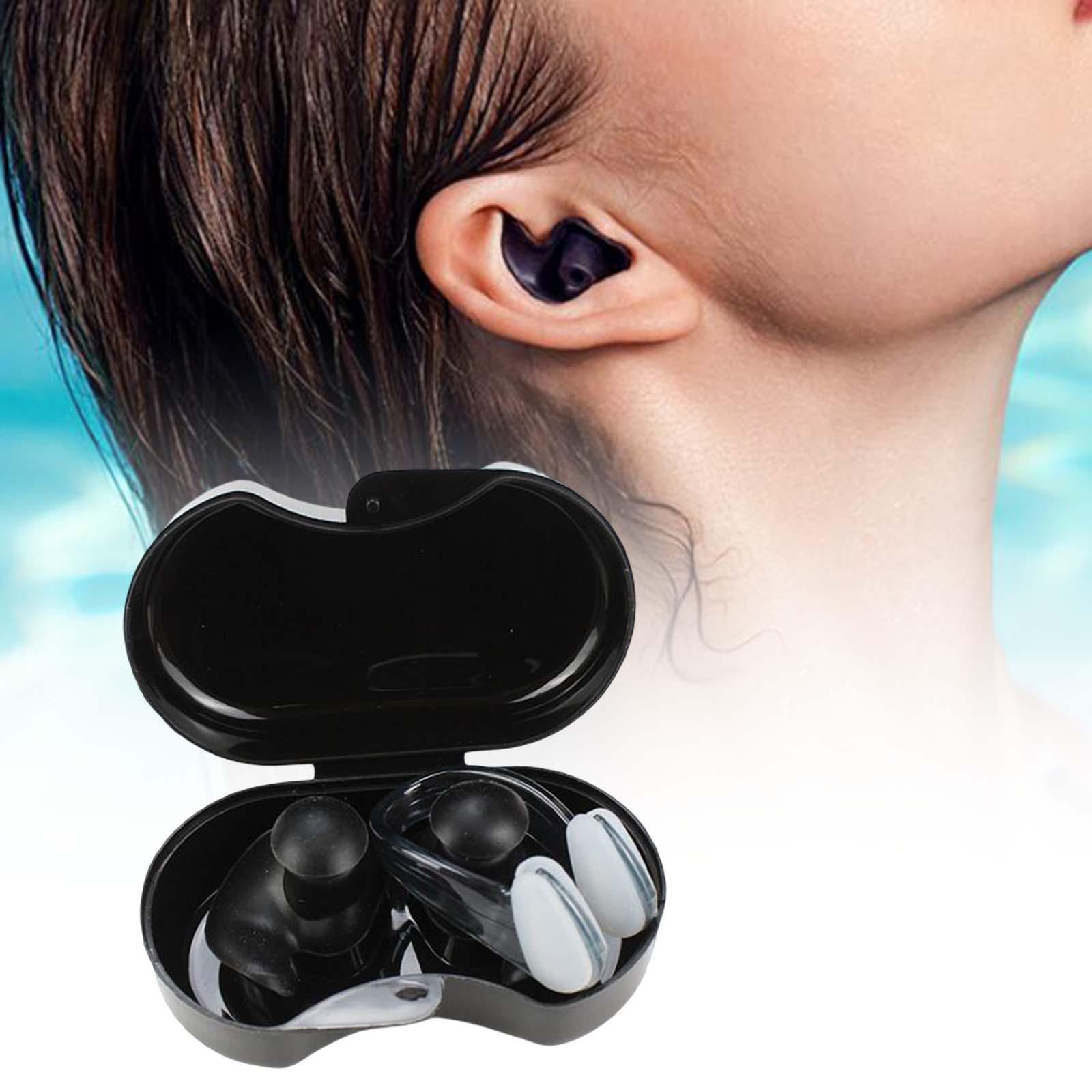
What is the primary cause of swimmer’s ear? The primary cause of swimmer’s ear is exposure to water, which can introduce bacteria or fungi into the ear canal. Wet ear canals are more prone to dermatitis and infection.
How can swimmer’s ear be prevented? To prevent swimmer’s ear, it is important to dry the ears thoroughly after water exposure, use earplugs or a swim cap while swimming, and avoid using cotton swabs or other objects to clean the ears, as this can damage the delicate skin of the ear canal and lead to infection.
What are the potential complications of untreated swimmer’s ear? If left untreated, swimmer’s ear can lead to complications such as chronic otitis externa, narrowing of the ear canal, facial infection, and malignant otitis externa, which is a dangerous spread of the infection to the bones and cartilage of the skull.
How is swimmer’s ear diagnosed? Swimmer’s ear is typically diagnosed through a physical examination, where the doctor will use an otoscope to inspect the skin of the ear canal, which may appear red, scaled, and peeling. Further tests, such as microscopic examination of the ear discharge or imaging scans, may be required in cases of malignant otitis externa.
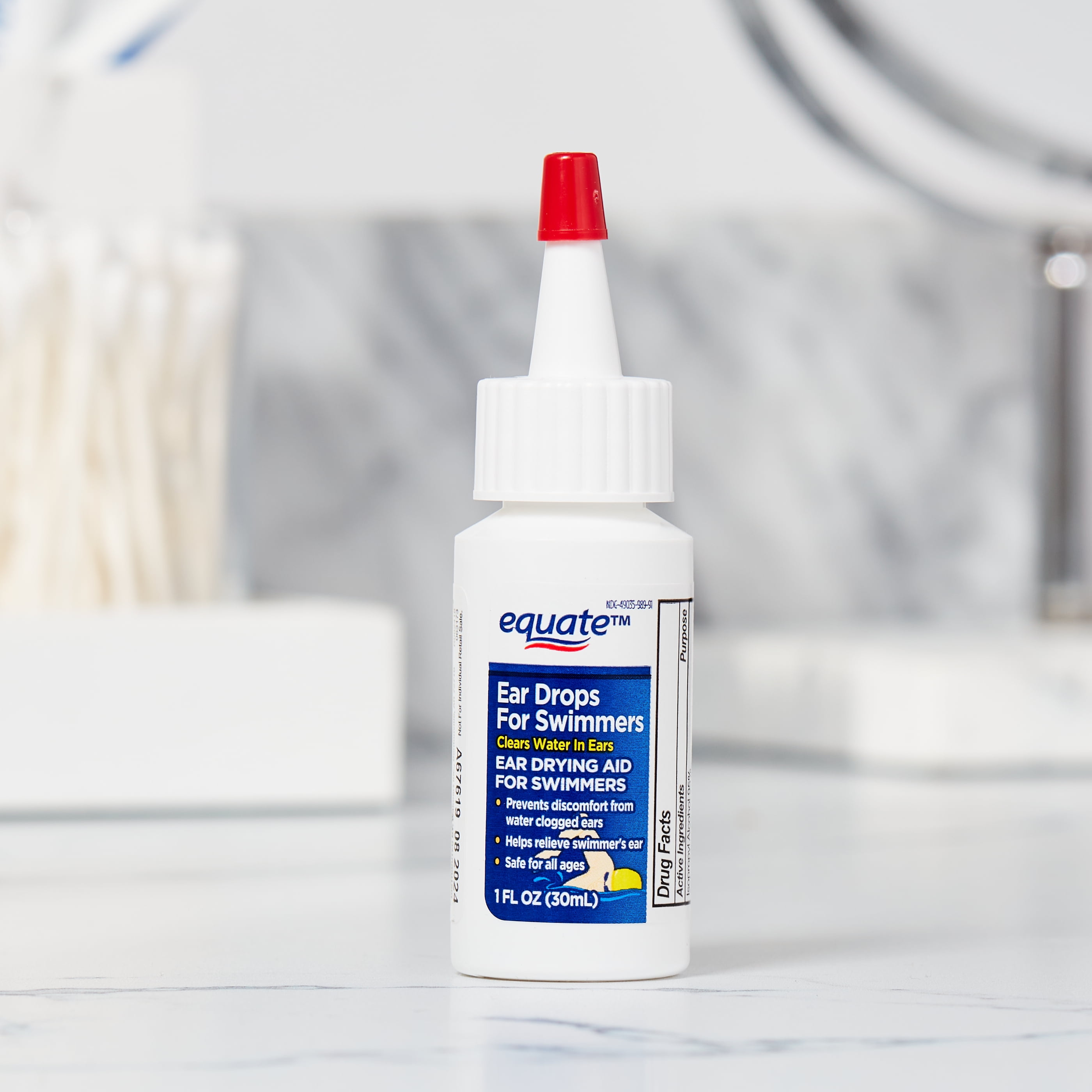
What are the treatment options for swimmer’s ear? Treatment for swimmer’s ear can include thorough cleaning and drainage of the ear canal, measures to keep the ear canal dry, pain relievers, anti-fungal preparations, antibiotic ear drops, steroid-based ear drops, oral antibiotics, intravenous antibiotics, and in some cases, surgery to treat and drain infected skull bones.
How can the risk of swimmer’s ear be reduced? To reduce the risk of swimmer’s ear, it is recommended to avoid excessive water exposure, use earplugs or a swim cap while swimming, dry the ears thoroughly after water exposure, avoid using cotton swabs or other objects to clean the ears, and seek prompt medical attention if symptoms develop.
What are the potential symptoms of malignant otitis externa? If swimmer’s ear progresses to malignant otitis externa, the infection may spread to the bones and cartilage of the skull, potentially causing dizziness, muscular weakness in the face, and other serious symptoms. Malignant otitis externa is a medical emergency that requires immediate medical attention.

Swimmer’s ear – Better Health Channel
Summary
Read the full fact sheet
- Swimmer’s ear is an infection or inflammation of the canal between the eardrum and the outer ear.
- The range of causes includes water in the ear canal, mechanical damage, chemical irritation and infected hair follicles.
- Treatment options include antibiotics, anti-fungal preparations and keeping the infected ear dry.
Swimmer’s ear is an infection or inflammation of the canal between the eardrum and the outer ear. This condition can be triggered by exposure to water, or mechanical damage due to overzealous cleaning. The infection can be caused by fungi or bacteria. Another name for swimmer’s ear is otitis externa.
The ear is made up of three different parts:
- Outer ear – the part you can see
- Middle ear – separated from the outer ear by the eardrum.
 The middle ear contains tiny bones that amplify sound waves
The middle ear contains tiny bones that amplify sound waves - Inner ear – where sound waves are translated into electrical impulses and sent to the brain. It also houses the vestibular apparatus that controls position awareness and balance.
Symptoms of swimmer’s ear
Some of the symptoms of swimmer’s ear include:
- Pain
- The pain may be exacerbated by moving the head or pulling at the ear
- Itchiness
- Foul-smelling yellow or green pus in the ear canal
- Reduced hearing
- Noises inside the ear, such as buzzing or humming.
Causes of swimmer’s ear
Some of the causes and risk factors include:
- Water – dirty water can deliver bacteria to the ear canal. A wet ear canal is also prone to dermatitis. Tiny cracks or splits in the skin can allow bacteria to enter.
- Mechanical damage – attempts to clean the ears using fingernails, cotton buds or other objects may cut the delicate tissues of the ear canal and lead to infection.

- Chemical irritation – hairsprays, shampoos and hair dyes may get into the ear canal and irritate the tissues.
- Middle ear infection (otitis media) – an infection within the middle ear can trigger an infection or inflammation in the ear canal.
- Diabetes – this condition can make earwax too alkaline, which creates a more hospitable environment for infectious agents.
- Folliculitis – an infected hair follicle within the ear canal can trigger a generalised infection.
- Narrow ear canals – some people’s ear canals are narrower than usual. This means that water can’t drain as effectively.
Complications of swimmer’s ear
Some of the possible complications of swimmer’s ear include:
- Chronic otitis externa – infection persists, or else keeps recurring.
- Narrowing of the ear canal – repeated infections can cause the ear canal to be narrowed by scar tissue.
 The risk of swimmer’s ear is increased if water can’t drain out properly. Narrow ear canals may also affect hearing.
The risk of swimmer’s ear is increased if water can’t drain out properly. Narrow ear canals may also affect hearing. - Facial infection – the infection may escape the ear canal, down small holes in the surrounding cartilage, and lead to painful facial swelling.
- Malignant otitis externa – the infection may spread to the bones and cartilage of the skull.
Malignant otitis externa is a dangerous complication
Malignant otitis externa is the spread of infection to the bones of the ear canal and lower part of the skull. This may cause structural damage in severe cases. Without treatment, the infection may reach the cranial nerves and the brain. People with reduced immunity or diabetes are at increased risk of this complication. Malignant otitis externa is a medical emergency. If you have swimmer’s ear and experience strange symptoms, such as dizziness or muscular weakness in your face, seek immediate medical help.
Diagnosis of swimmer’s ear
Swimmer’s ear is diagnosed by physical examination. The skin of the ear canal will appear red, scaled and peeling when examined using an otoscope. The eardrum may be inflamed and swollen. Microscopic examination of the discharge in the ear canal will, in most cases, tell the doctor whether the infection is caused by bacteria or fungi. The diagnosis can be confirmed by culturing a swab of pus. In the case of malignant otitis externa, further tests – including skull x-rays, magnetic resonance imaging (MRI) and computed tomography (CT) scans – are taken. Treatment depends on the degree of bone infection (osteomyelitis), but is generally lengthy and involves prolonged courses of antibiotics. Surgery may also be necessary.
The skin of the ear canal will appear red, scaled and peeling when examined using an otoscope. The eardrum may be inflamed and swollen. Microscopic examination of the discharge in the ear canal will, in most cases, tell the doctor whether the infection is caused by bacteria or fungi. The diagnosis can be confirmed by culturing a swab of pus. In the case of malignant otitis externa, further tests – including skull x-rays, magnetic resonance imaging (MRI) and computed tomography (CT) scans – are taken. Treatment depends on the degree of bone infection (osteomyelitis), but is generally lengthy and involves prolonged courses of antibiotics. Surgery may also be necessary.
Treatment for swimmer’s ear
Treatment for swimmer’s ear depends on the severity of the infection and the type of infectious agent, but may include:
- Thorough cleaning and drainage of the ear canal
- Measures to keep the ear canal dry, such as using earplugs or a shower cap while bathing
- Painkillers
- Heat packs held to the ear
- Anti-fungal preparations
- Antibiotic ear drops
- Steroid-based ear drops
- A wick inserted into the ear canal to deliver medicated drops close to the eardrum
- Oral antibiotics
- Intravenous antibiotics
- Surgery, to treat and drain infected skull bones.

Prevention strategies
Suggestions to reduce the risk of swimmer’s ear include:
- Avoid swimming in dirty or polluted waters.
- Wear earplugs when you swim.
- Dry your ears thoroughly after exposure to water.
- To make sure that ear canals are completely dry, use a couple of drops of one part alcohol and one part vinegar in each ear.
- Plug your ears with cotton wool when using hair spray, shampoo or other chemical products.
- Don’t be too enthusiastic about cleaning your ears.
- Avoid poking your fingers in your ears, because fingernails can cut the skin of the ear canal.
Where to get help
- Your doctor
- Ear specialist
- Ears explained, 2001, Better Health Channel, Department of Health, State Government of Victoria, Melbourne.
This page has been produced in consultation with and approved
by:
Swimmer’s ear – Better Health Channel
Summary
Read the full fact sheet
- Swimmer’s ear is an infection or inflammation of the canal between the eardrum and the outer ear.

- The range of causes includes water in the ear canal, mechanical damage, chemical irritation and infected hair follicles.
- Treatment options include antibiotics, anti-fungal preparations and keeping the infected ear dry.
Swimmer’s ear is an infection or inflammation of the canal between the eardrum and the outer ear. This condition can be triggered by exposure to water, or mechanical damage due to overzealous cleaning. The infection can be caused by fungi or bacteria. Another name for swimmer’s ear is otitis externa.
The ear is made up of three different parts:
- Outer ear – the part you can see
- Middle ear – separated from the outer ear by the eardrum. The middle ear contains tiny bones that amplify sound waves
- Inner ear – where sound waves are translated into electrical impulses and sent to the brain. It also houses the vestibular apparatus that controls position awareness and balance.

Symptoms of swimmer’s ear
Some of the symptoms of swimmer’s ear include:
- Pain
- The pain may be exacerbated by moving the head or pulling at the ear
- Itchiness
- Foul-smelling yellow or green pus in the ear canal
- Reduced hearing
- Noises inside the ear, such as buzzing or humming.
Causes of swimmer’s ear
Some of the causes and risk factors include:
- Water – dirty water can deliver bacteria to the ear canal. A wet ear canal is also prone to dermatitis. Tiny cracks or splits in the skin can allow bacteria to enter.
- Mechanical damage – attempts to clean the ears using fingernails, cotton buds or other objects may cut the delicate tissues of the ear canal and lead to infection.
- Chemical irritation – hairsprays, shampoos and hair dyes may get into the ear canal and irritate the tissues.
- Middle ear infection (otitis media) – an infection within the middle ear can trigger an infection or inflammation in the ear canal.

- Diabetes – this condition can make earwax too alkaline, which creates a more hospitable environment for infectious agents.
- Folliculitis – an infected hair follicle within the ear canal can trigger a generalised infection.
- Narrow ear canals – some people’s ear canals are narrower than usual. This means that water can’t drain as effectively.
Complications of swimmer’s ear
Some of the possible complications of swimmer’s ear include:
- Chronic otitis externa – infection persists, or else keeps recurring.
- Narrowing of the ear canal – repeated infections can cause the ear canal to be narrowed by scar tissue. The risk of swimmer’s ear is increased if water can’t drain out properly. Narrow ear canals may also affect hearing.
- Facial infection – the infection may escape the ear canal, down small holes in the surrounding cartilage, and lead to painful facial swelling.

- Malignant otitis externa – the infection may spread to the bones and cartilage of the skull.
Malignant otitis externa is a dangerous complication
Malignant otitis externa is the spread of infection to the bones of the ear canal and lower part of the skull. This may cause structural damage in severe cases. Without treatment, the infection may reach the cranial nerves and the brain. People with reduced immunity or diabetes are at increased risk of this complication. Malignant otitis externa is a medical emergency. If you have swimmer’s ear and experience strange symptoms, such as dizziness or muscular weakness in your face, seek immediate medical help.
Diagnosis of swimmer’s ear
Swimmer’s ear is diagnosed by physical examination. The skin of the ear canal will appear red, scaled and peeling when examined using an otoscope. The eardrum may be inflamed and swollen. Microscopic examination of the discharge in the ear canal will, in most cases, tell the doctor whether the infection is caused by bacteria or fungi. The diagnosis can be confirmed by culturing a swab of pus. In the case of malignant otitis externa, further tests – including skull x-rays, magnetic resonance imaging (MRI) and computed tomography (CT) scans – are taken. Treatment depends on the degree of bone infection (osteomyelitis), but is generally lengthy and involves prolonged courses of antibiotics. Surgery may also be necessary.
The diagnosis can be confirmed by culturing a swab of pus. In the case of malignant otitis externa, further tests – including skull x-rays, magnetic resonance imaging (MRI) and computed tomography (CT) scans – are taken. Treatment depends on the degree of bone infection (osteomyelitis), but is generally lengthy and involves prolonged courses of antibiotics. Surgery may also be necessary.
Treatment for swimmer’s ear
Treatment for swimmer’s ear depends on the severity of the infection and the type of infectious agent, but may include:
- Thorough cleaning and drainage of the ear canal
- Measures to keep the ear canal dry, such as using earplugs or a shower cap while bathing
- Painkillers
- Heat packs held to the ear
- Anti-fungal preparations
- Antibiotic ear drops
- Steroid-based ear drops
- A wick inserted into the ear canal to deliver medicated drops close to the eardrum
- Oral antibiotics
- Intravenous antibiotics
- Surgery, to treat and drain infected skull bones.

Prevention strategies
Suggestions to reduce the risk of swimmer’s ear include:
- Avoid swimming in dirty or polluted waters.
- Wear earplugs when you swim.
- Dry your ears thoroughly after exposure to water.
- To make sure that ear canals are completely dry, use a couple of drops of one part alcohol and one part vinegar in each ear.
- Plug your ears with cotton wool when using hair spray, shampoo or other chemical products.
- Don’t be too enthusiastic about cleaning your ears.
- Avoid poking your fingers in your ears, because fingernails can cut the skin of the ear canal.
Where to get help
- Your doctor
- Ear specialist
- Ears explained, 2001, Better Health Channel, Department of Health, State Government of Victoria, Melbourne.
This page has been produced in consultation with and approved
by:
What to do if a child has an earache after swimming
Swimming is a useful sport that strengthens the muscular corset and tempers the body.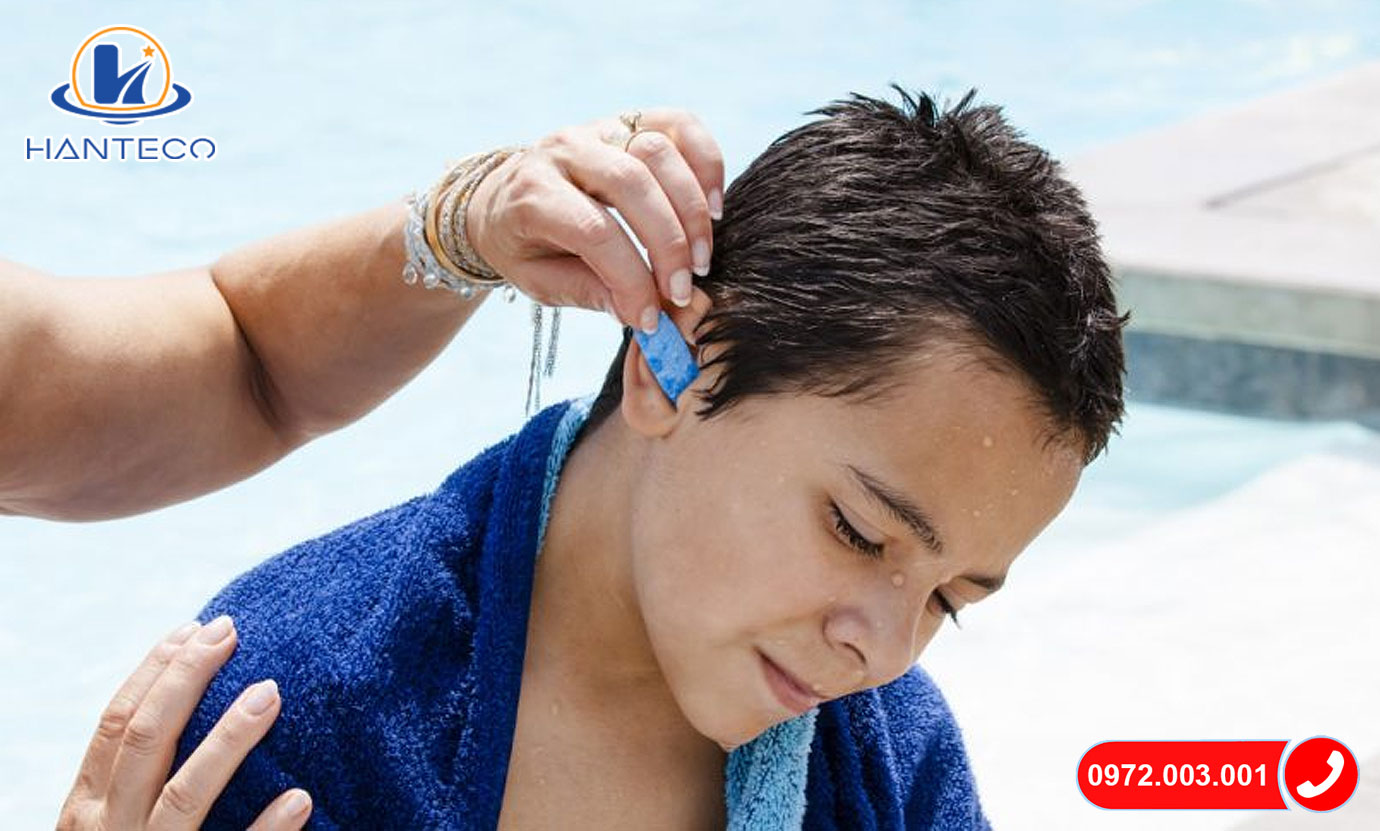 Therefore, parents often go to swimming lessons. But sometimes a little swimmer complains that his ear hurts after the pool. What to do in such cases?
Therefore, parents often go to swimming lessons. But sometimes a little swimmer complains that his ear hurts after the pool. What to do in such cases?
Page navigation:
- Causes of ear pain in a child
- After swimming
- After diving
- After the pool
- Symptoms of water entering the ear
- Otitis or “water in the ear”
- What is swimmer’s ear
- How to get rid of water in the ear
- At home
- Medical methods
- How do you keep water out of your ears? Prevention
- Swimming earplugs
Causes of ear pain in a child
Contact with water is harmful to the ears – the wax swells when exposed to water. Usually in this case, the ear hurts from the fact that a plug has formed, and the inflammatory process begins. The main reasons for this are the remnants of fluid in the ear canal after diving, swimming and other water procedures.
After bathing
Water may remain in the ear even after regular bathing or showering. Especially when the child’s head is washed, it is difficult to isolate the ear passages from the liquid. Therefore, immediately after bathing, you need to blot your ears with a towel, ask the child if he feels as if there is water in his ear.
After the dive
When you plan to have your child dive in a pool or pond, tell them about the safety precautions. After all, plunging into the water, he subjects his ears to a serious test – there is a pressure drop. If, in addition, water gets into the ear, it can stay there and provoke an inflammatory process.
After the pool
When water gets into the ears, it must be dried after exercise. Children often have sore ears after the pool, because there are droplets of water left there, and when the child goes outside, it blows. As a result – otitis media and other inflammatory diseases!
Symptoms of water in the ear
If water has entered the ear, try to detect it as soon as possible and remove it. The longer she stays inside, the more serious the consequences can be.
The longer she stays inside, the more serious the consequences can be.
Otitis or “water in the ear”
In this case, the process develops rapidly – the child went outside after the pool with wet ear passages. Then he goes home, often in windy weather, plus he can “grab” an infection along the way. Literally the next day, the consequences are not long in coming:
Such conditions require immediate medical attention. Running otitis media can harm the auditory system and even lead to more serious complications, such as inflammation of the meninges.
What is swimmer’s ear
In ENT practice, there is such a term as swimmer’s ear. It is associated with constant irritation of the ear tract by water. Firstly, the water is not sterile and a huge number of different microorganisms get on the skin, and secondly, the constant humid environment in the ears creates favorable conditions for infectious processes. The disease is manifested by the following symptoms:
The process is aggravated by the development of infection. Also, sometimes parents do a disservice to the child by trying to clean out the water and sulfur with cotton swabs. But instead of cleansing, they only push wet masses inside, or injure delicate skin and provoke inflammation.
Also, sometimes parents do a disservice to the child by trying to clean out the water and sulfur with cotton swabs. But instead of cleansing, they only push wet masses inside, or injure delicate skin and provoke inflammation.
How to get rid of water in the ear
Parents of little swimmers are constantly concerned about how to get rid of water in their ears. Some of them already have their own practiced techniques, thanks to which they are doing great at home. But if the liquid has penetrated deeply, and a cork has formed in the ear from the water, you have to contact the doctor.
At home
The main thing to do is to wipe your ear after every visit to the pool. When taking a child from the sports section, the parent must control this moment – take ordinary cotton pads with you and blot the sink. It is also worth asking the child if he has the feeling that water has got into his ear and is standing in the depths of the passage. If so, then you need to be more active.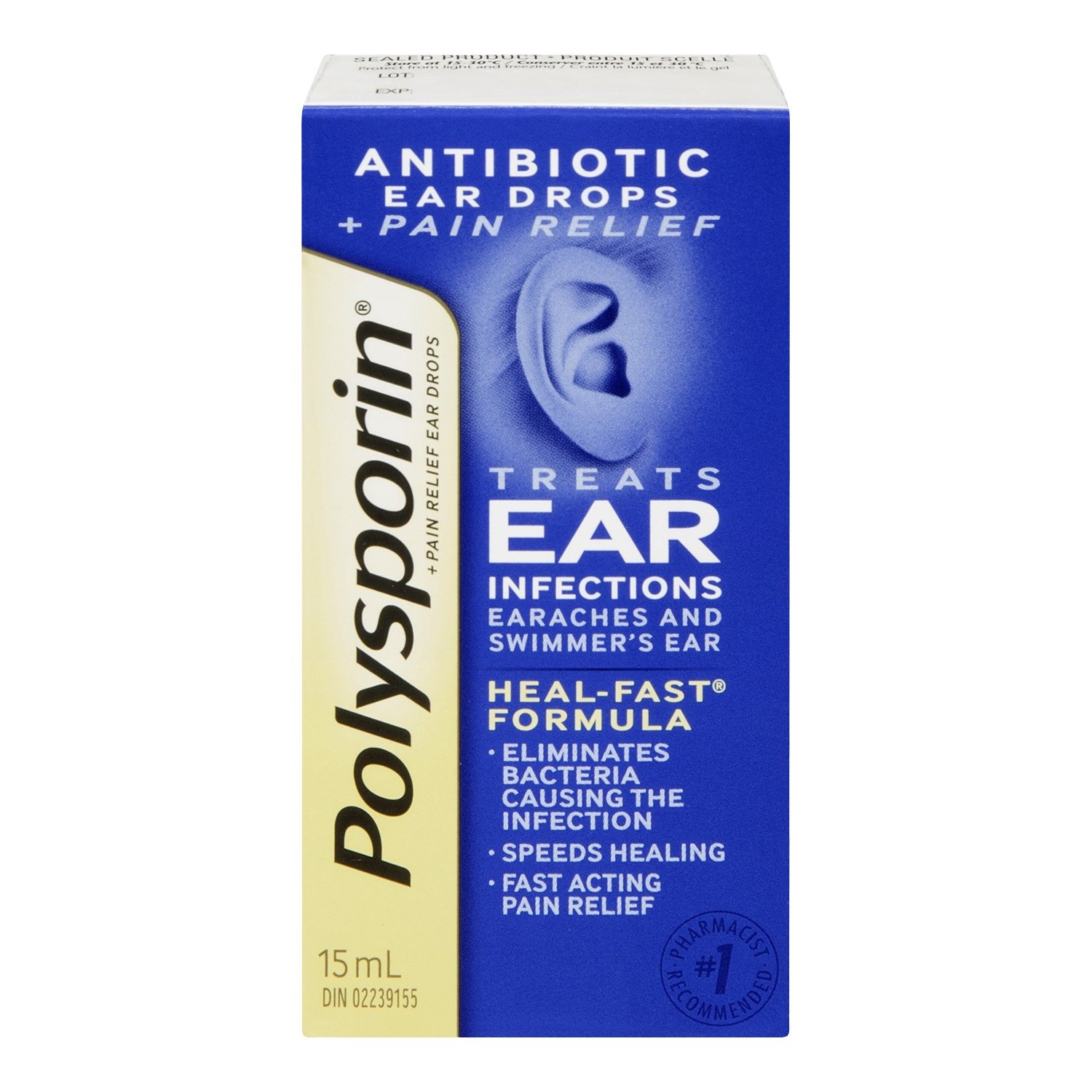
To dry the ear, put turunda with boric alcohol or other preparations into the ear canal. You need to hold it for 15-20 minutes, then clean it. If it doesn’t help, you should contact an otolaryngologist. If, with the introduction of turunda, the child complains that he is baking, it is better to remove the cotton wool. Boric alcohol is a safe drug, but individual tolerance and skin sensitivity must be taken into account.
Medical methods
It is worth contacting an ENT when it was not possible to clean the ears at home or if the ear hurts after the pool. The doctor will conduct an examination and prescribe the necessary measures. It is often possible to solve the problem by washing with Janet’s syringe. It may seem strange – how does water help to remove water? But the fact is that in these cases, if the ear hurts and stuffs up, it is not from the water itself, but from the swelling of sulfur inside it. Rinsing helps to thoroughly clean everything.
In some cases, the doctor prescribes drops and other medications. If an inflammatory process has formed, prescribes the treatment of otitis media: antibiotics, anti-inflammatory drugs, physiotherapy.
If an inflammatory process has formed, prescribes the treatment of otitis media: antibiotics, anti-inflammatory drugs, physiotherapy.
How do I keep water out of my ears? Prevention
Parents of little swimmers often ask what to do if their ear hurts after swimming. However, the most correct answer is to avoid such situations at all. If you carefully monitor the hygiene of the child’s ears and drain them after swimming, there will be no problem. There are also additional protective equipment – for example, earplugs.
Swimming earplugs
Swimming earplugs protect your ear canal from water and pressure surges. At the same time, they allow you to hear voices and signals in the pool – the coach’s whistle, the voices of other swimmers. This is a win-win solution for those who want to visit the pool without risk to their hearing! It is also important to note that they do not sink and are securely placed in the ear, because they are made according to an individual cast.
They are molded to your ear to create the perfect shape and fit, meaning they won’t fall out. Earplugs are made of high-quality hypoallergenic material, and, importantly, they do not sink in water. Follow the link and find out more about individual earplugs! filling out and submitting the registration form on the site;
Book a FREE* Rapid Hearing Test at one of our Centers now
Your name
Your phone
Select Center
Hearing Center Nyvky metro in KievHearing Center Obolon metro in KievHearing Center Darnytsia metro in KievHearing Center University in KievHearing Center in LvivHearing Center in Bila TserkvaHearing Center in Krivoy RogCentre Rumor in Kremenchug
Date of consultation
Problem summary
Or use our chatbots
Your data is protected by privacy policy.
* The terms of the free action for express hearing diagnostics are valid after:
Acute otitis externa after the swimming pool
Complaints
A 19-year-old girl came to the clinic with complaints of severe pain in the right ear, spreading to the parotid region and lower jaw, aggravated during chewing, discharge from the right ear, fever up to 37.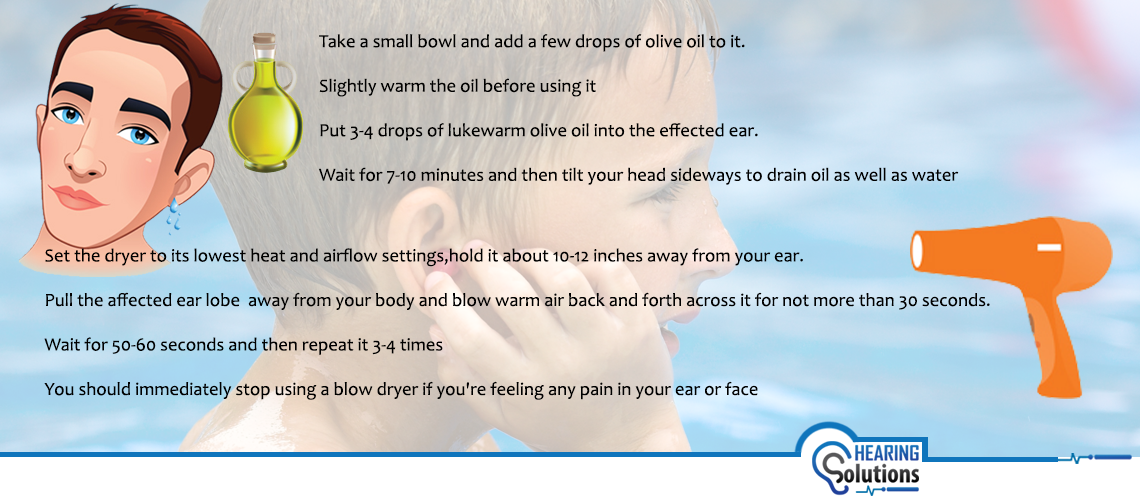 8, congestion of the right ear. These complaints disturb the patient for five days. From the anamnesis it is known that ear pain appeared after the patient tried to dry her ear with a cotton swab after swimming in the pool. The patient is a professional swimmer and spends a lot of time in the water.
8, congestion of the right ear. These complaints disturb the patient for five days. From the anamnesis it is known that ear pain appeared after the patient tried to dry her ear with a cotton swab after swimming in the pool. The patient is a professional swimmer and spends a lot of time in the water.
Examination
On examination, the skin of the right external auditory canal is sharply swollen, hyperemic, the auditory canal is narrowed, there is a thick purulent discharge inside it, swelling of the skin of the anterior parotid region on the right. When pressing on the tragus and parotid lymph nodes, pain is noted. The rest of the ENT organs without pathology.
Diagnosis
Based on complaints, anamnesis and objective examination data, the diagnosis was made: Acute otitis externa on the right.
Treatment
After the examination, purulent discharge from the ear canal was taken to determine the microflora, and the toilet of the right ear was made. Medications were prescribed: systemic antibiotics, local antibacterial drops, as well as non-steroidal anti-inflammatory drugs for pain relief.
Medications were prescribed: systemic antibiotics, local antibacterial drops, as well as non-steroidal anti-inflammatory drugs for pain relief.
Summary
At the follow-up examination after seven days, the patient reported that the pain in the ear completely stopped on the third day, the body temperature returned to normal on the second day, at the time of the examination, the skin of the external auditory canal was dry, without signs of inflammation, there was no discharge in the auditory canal, hearing is fully restored. According to the results of a smear, Pseudomonas aeruginosa was sown from the ear. After the treatment, a second smear was obtained, as a result of which no pathological microflora was detected. After the treatment, there was a complete recovery, the patient was able to return to sports as soon as possible.
Seeing a doctor early can help keep you healthy.
Don’t delay treatment, call now. We work around the clock in Moscow.

 The middle ear contains tiny bones that amplify sound waves
The middle ear contains tiny bones that amplify sound waves
 The risk of swimmer’s ear is increased if water can’t drain out properly. Narrow ear canals may also affect hearing.
The risk of swimmer’s ear is increased if water can’t drain out properly. Narrow ear canals may also affect hearing.